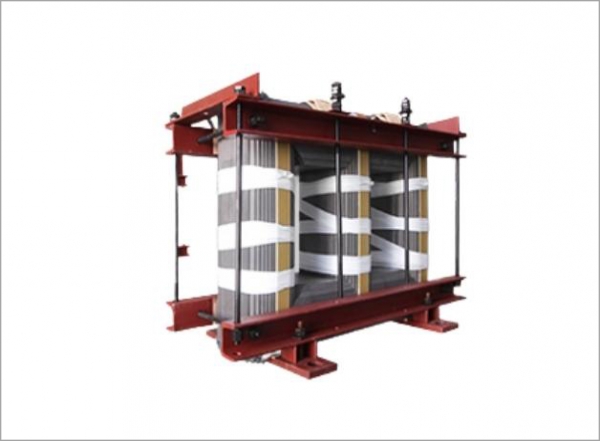In modern power systems, transformers, as one of the key power equipment, undertake the important task of converting high-voltage current into low-voltage current. One of the core parts of the transformer, the oil-immersed transformer core, is widely used in the power industry due to its excellent performance and stability. The role of the oil-immersed transformer core in energy transmission is crucial.
The oil-immersed transformer core refers to the core part of the transformer, which is immersed in oil. The core is composed of highly conductive steel sheets, which are tightly stacked to form a magnetic circuit, while the oil acts as a cooling and insulating medium. The role of the oil is not only to cool the transformer, but also to effectively reduce noise and vibration, while providing additional electrical insulation protection.
The oil-immersed transformer core usually uses silicon steel sheets, which have a high magnetic permeability and can effectively reduce hysteresis loss and eddy current loss, thereby improving the efficiency of the transformer. As a cooling medium, oil forms a good heat exchange between the core steel sheets and the coil, ensuring that the transformer will not be damaged due to overheating when working under high load.
The oil in the transformer core plays two main roles: First, the oil circulates to remove the heat generated in the transformer and maintain the normal temperature of the equipment. Second, as an insulating medium, the oil effectively isolates the current and metal parts, reducing the risk of electrical failure.
One of the biggest advantages of the oil-immersed transformer core is its excellent heat dissipation performance. The transformer generates a lot of heat when working. As a cooling medium, oil can quickly remove the heat, avoid overheating of the transformer, and ensure its efficient and stable operation.

Excellent electrical insulation
As an excellent insulating medium, oil can effectively prevent current leakage or short circuit. Especially in high-voltage power systems, the insulation performance of oil greatly improves the safety and reliability of transformers.
Noise control
The oil-immersed transformer core can effectively reduce the noise and vibration caused by changes in the magnetic field. The buffering effect of oil inside the transformer significantly reduces the noise during equipment operation, especially in large transformers. The oil-immersed design can greatly improve the comfort of the working environment.
Strong seismic performance
Due to the presence of oil, the oil-immersed transformer core can effectively reduce the vibration generated by the equipment during operation, enhance the seismic resistance of the transformer, and extend the service life of the equipment.
Long life and low maintenance cost
The design of the oil-immersed transformer core enables it to maintain high efficiency in long-term operation, and due to the excellent cooling and insulation properties of the oil, the transformer has low maintenance requirements and relatively low repair costs.
Application areas of oil-immersed transformer core
Power transmission system
Oil-immersed transformers are widely used in power transmission and distribution systems, especially in high-voltage transformers and large-capacity transformers. They can effectively convert high-voltage currents into low voltages suitable for home and industrial use, ensuring a stable supply of electricity.
Industrial manufacturing
In some large-scale industrial production, oil-immersed transformer cores are widely used in power conversion of equipment. High-power machinery, metallurgical industry, chemical plants and other fields often require strong and stable power support, which are inseparable from the role of oil-immersed transformers.
Renewable energy facilities
With the rapid development of renewable energy (such as wind energy, solar energy, etc.) industries, oil-immersed transformer cores are also widely used in these facilities. The power conversion and transmission process of wind turbines and solar power generation systems cannot be separated from the high efficiency of oil-immersed transformers.
Railway system
The power system in the railway transportation system often needs to use oil-immersed transformer cores, especially in the power supply system of high-speed rail and subway. Oil-immersed transformers can ensure the safety and stability of power supply.
Future development trend of oil-immersed transformer cores
With the continuous increase in power demand, the technology of oil-immersed transformer cores is also constantly improving. In the future, oil-immersed transformers will develop in the following directions:
The use of environmentally friendly oil
With the increase in environmental awareness, the environmental protection of transformer oil has received more and more attention. In the future, the transformer core may use biodegradable and harmless oil to reduce pollution to the environment.
Application of intelligent and monitoring technology
With the rapid development of information technology, future oil-immersed transformers may combine intelligent sensors and monitoring technology to achieve remote monitoring, real-time data transmission and intelligent fault diagnosis, thereby improving the operating efficiency and safety of transformers.
More efficient heat dissipation technology
Future oil-immersed transformers will continue to optimize the cooling system and may adopt more efficient heat dissipation technology or more advanced cooling oil to improve the performance of transformers under high load conditions and ensure that they are more stable and efficient.
The core of the oil-immersed transformer is a vital component of the modern power system. Its excellent heat dissipation, insulation, noise control and vibration resistance make it play an irreplaceable role in the high-voltage power system. With the continuous development of technology, the oil-immersed transformer will continue to usher in new innovations and improvements to better meet the growing demand for electricity and promote the stability and efficiency of global energy transmission.
 +86-523 8891 8899
+86-523 8891 8899  +86-523 8891 8266
+86-523 8891 8266  info@tl-core.com
info@tl-core.com  No.1, Third Industrial Park, Liangxu Street, Taizhou City, Jiangsu, China
No.1, Third Industrial Park, Liangxu Street, Taizhou City, Jiangsu, China 

 English
English Español
Español Türk
Türk 中文简体
中文简体